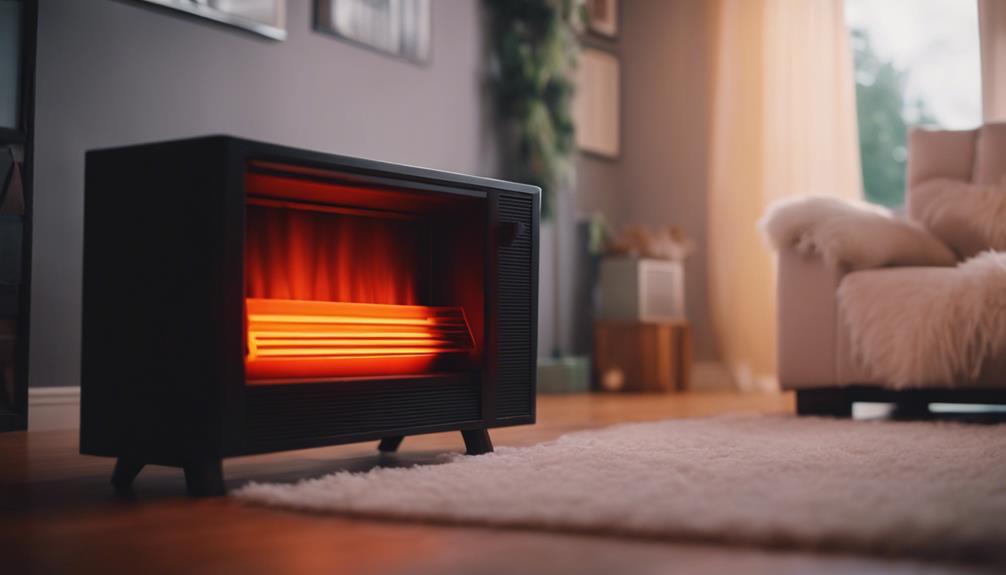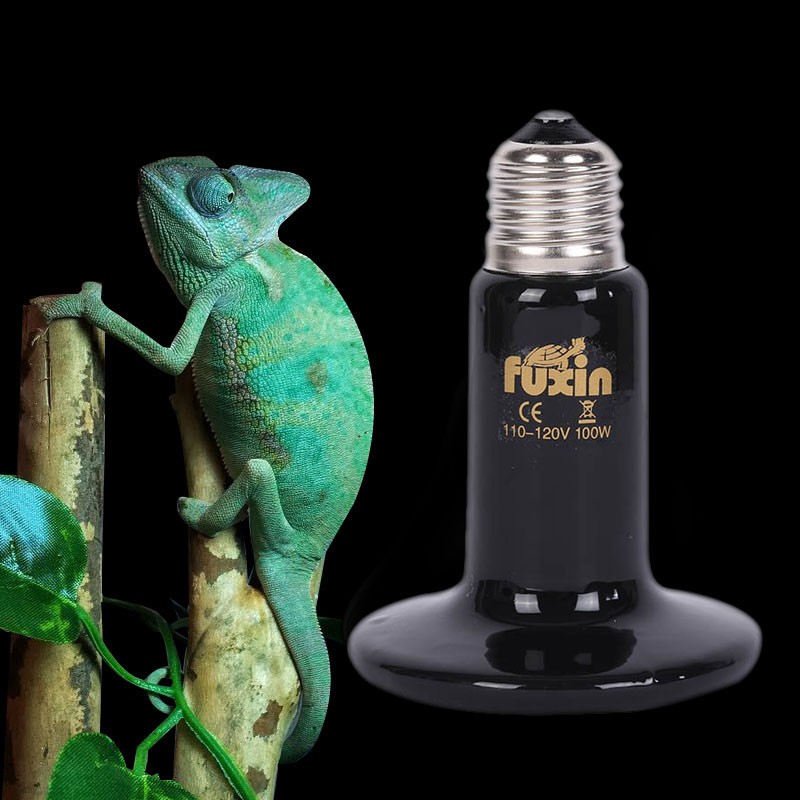
Improve your indoor air quality and alleviate allergy symptoms effectively with infrared heaters. By targeting objects for heat transfer, they reduce airborne particles that trigger reactions and minimize dust circulation. This direct warming approach is beneficial for individuals sensitive to allergens, offering a healthier environment. Infrared heaters act as air purifiers, preventing dust circulation and maintaining humidity levels. Their health benefits include improving blood circulation and energy efficiency. Safety features such as high energy efficiency and automatic shut-off sensors guarantee a safe operation. Enhance your comfort and allergy management with these heaters that create a clean, allergen-free living space.
How Infrared Heaters Benefit Allergies

Infrared heaters can beneficially impact allergies by reducing the amount of airborne particles that can trigger allergic reactions in your home.
The use of infrared technology in these heaters helps to create heat that warms objects directly, rather than heating the air. This process can lead to a decrease in the circulation of dust, pet dander, and other allergens that typically float in the air. By minimizing these airborne allergens, infrared heaters can help alleviate allergy symptoms like sneezing, coughing, and watery eyes that are often exacerbated by poor indoor air quality.
Studies have shown that infrared heaters can play a significant role in improving indoor air quality by reducing the presence of mold spores, bacteria, and viruses that can worsen allergy symptoms.
The precise targeting of heat towards objects instead of the air prevents the circulation of these harmful particles, creating a healthier environment for individuals sensitive to allergens.
Reduced Airborne Allergens With Infrared Heating
By directly targeting objects for heat transfer, infrared heating systems effectively reduce the circulation of airborne allergens that commonly trigger allergic reactions in indoor environments.
Unlike traditional heating systems that rely on convection to warm the air, infrared heaters emit heat that's absorbed by objects in the room, including walls, furniture, and floors. This targeted heat distribution minimizes the stirring up of dust and other allergens that are often present in the air.
The reduction of airborne allergens achieved by infrared heating can considerably benefit individuals with allergies, asthma, or other respiratory conditions.
Improved Air Quality for Allergy Relief

Improving indoor air quality is essential for providing relief to individuals suffering from allergies. One significant way infrared heaters benefit allergy sufferers is through air purification.
These heaters don't dry out the air like traditional heating systems, preventing the circulation of dust and other allergens. Additionally, some infrared heaters come with built-in air purifiers that help remove particles that can trigger allergies, such as pet dander, pollen, and dust mites.
Moreover, maintaining the right humidity levels in your home is vital for allergy relief. Infrared heaters excel at humidity control by not stripping the air of its natural moisture.
This feature prevents respiratory irritation and soothes allergy symptoms. By keeping the air properly humidified, infrared heaters contribute to a healthier indoor environment for allergy sufferers.
With improved air quality and humidity control, individuals with allergies can experience significant relief and enjoy a more comfortable living space.
Health Benefits of Infrared Heating
Enhancing your well-being through the use of infrared heating involves a range of health benefits that can positively impact your daily life. Infrared heaters operate by emitting infrared radiation that directly heats objects and people in the room, rather than heating the air. This method can lead to improved blood circulation, reduced muscle and joint pain, and even enhanced cardiovascular health.
One significant health benefit of using infrared heating is its energy efficiency. These heaters are known for their ability to convert almost all the energy they consume into heat, unlike traditional heaters that lose energy through ducts or vents. This efficiency not only reduces energy costs but also minimizes environmental impact.
When considering installation, verify the heater is mounted at an appropriate height to maximize its effectiveness. Additionally, positioning the heater in a central location can help evenly distribute heat throughout the room.
Safety Features of Infrared Heaters

To guarantee the safe operation of infrared heaters, understanding their key safety features is vital for preventing potential hazards.
One of the primary safety features of infrared heaters is their energy efficiency. These heaters are designed to convert a high percentage of the energy they consume into heat, minimizing the risk of overheating and reducing the likelihood of electrical fires.
Additionally, most infrared heaters come equipped with safety sensors that automatically shut off the unit if it reaches unsafe temperatures or is tipped over, providing an extra layer of protection.
When it comes to installation guidelines, it's important to follow the manufacturer's instructions carefully. Proper installation guarantees that the heater functions correctly and reduces the risk of accidents.
Make sure the heater is placed on a stable surface away from flammable materials and that there's sufficient clearance around the unit for proper ventilation.
Combating Mold and Mildew Allergens
Combatting mold and mildew allergens requires vigilant maintenance practices and strategic use of infrared heaters in moisture-prone areas.
Mold prevention is essential in allergy management, as mold spores can trigger allergic reactions and respiratory issues. To control mildew and mold growth, guarantee proper ventilation in areas prone to moisture buildup, such as bathrooms and basements. Infrared heaters can aid in this effort by reducing moisture levels through gentle heating, creating an environment less hospitable to mold and mildew.
When using infrared heaters for mold prevention, place them in areas where moisture accumulation is common. The targeted warmth from the heaters can help dry out damp spaces, inhibiting mold and mildew growth.
Additionally, regularly inspect and clean areas prone to mold, such as window sills, walls, and ceilings, to prevent spores from spreading.
Enhancing Comfort and Allergy Management

Incorporating infrared heaters into your living spaces can considerably contribute to improving comfort levels and effectively managing allergies.
When it comes to allergy symptoms, maintaining a clean and allergen-free environment is essential. Infrared heaters can help by reducing moisture in the air, inhibiting the growth of mold and mildew which are common allergens.
By emitting heat that directly warms objects and people in the room, infrared heaters create a more comfortable environment compared to traditional heating systems that mainly warm the air. This can be especially beneficial for individuals with allergies, as excessive dryness or humidity in the air can exacerbate symptoms like congestion, sneezing, and itchy eyes.
Moreover, infrared heaters produce gentle, uniform heat that doesn't rely on blowing air around, which can stir up dust and other particles that may trigger allergies. This feature helps in maintaining better indoor air quality and minimizing the circulation of allergens, promoting a healthier living space for allergy sufferers.
Conclusion
To sum up, infrared heaters offer numerous benefits for allergy sufferers.
From reducing airborne allergens and improving air quality to combating mold and mildew, these heaters provide a safe and effective way to manage allergies.
With their health benefits and safety features, infrared heaters can enhance comfort and overall well-being for those with allergies.
Consider incorporating an infrared heater into your home to experience relief from allergies and enjoy a healthier living environment.

